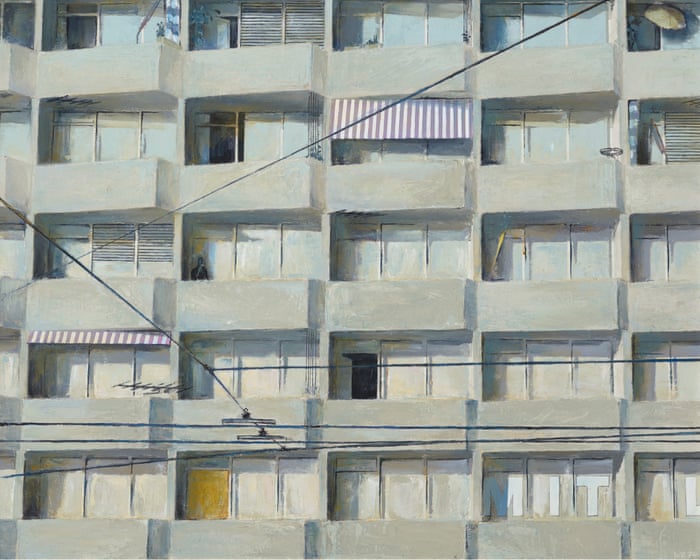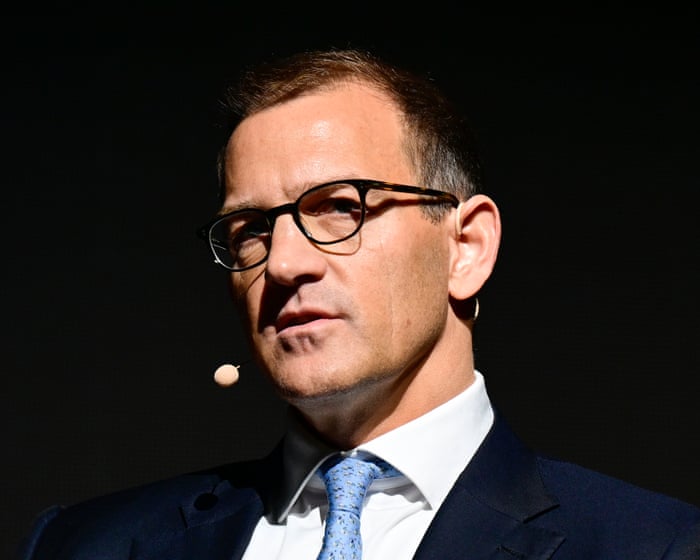A new art exhibition focuses on the high-rise prefab apartment blocks of communist East Germany and their political and cultural impact, highlighting one of history’s largest social housing experiments. The show also subtly reflects on the unspoken challenges of today’s housing crisis.
Titled Wohnkomplex (Living Complex): Art and Life in Prefabs, the exhibition explores the collective experience of millions of East Germans. It serves as a powerful reminder that the “housing question”—whether under dictatorship or democracy—remains far from solved.
Featuring 50 works by 22 artists, most of whom lived in or near a plattenbau (literally “slab building,” named for the concrete panels used in construction), the exhibition examines how these large-scale, standardized developments shaped residents’ lives and, by extension, society as a whole. The construction of these buildings was central to the social policy of the German Democratic Republic (GDR) and also supported its industrial identity.
“It’s about the prefab slab as a place and memory of living, as a symbol of social utopias, and as a canvas for social change,” says Kito Nedo, the exhibition’s curator at Potsdam’s Minsk gallery—an important architectural example of Ostmodern (East Modernism) that was nearly demolished before local protests saved it.
“The most pressing question, more relevant than ever in Germany and cities across Europe, is how to create affordable, quality housing,” Nedo adds. “The GDR’s housing plan was a historic attempt to answer that. It’s a challenge politicians still face today.”
From the 1970s onward, when mass production began, a flat in one of these standardized concrete complexes was considered a dream home for many East Germans. They were drawn by the promise of modern comforts: an indoor toilet, an open-plan kitchen and dining area with a serving hatch, reliable district heating, and amenities like public transport, department stores (kaufhalle), childcare, schools, youth clubs, and health centers. Green spaces for leisure were also part of the plan, though they sometimes took longer to materialize.
The speed of construction is captured in Sonya Schönberger’s archaeological-style sculptures, which preserve in silicone the shoe and paw prints left by residents on still-wet concrete slabs in Berlin’s Baltic Sea Quarter, built between 1984 and 1988.
The design of these housing estates—with childcare, proximity to workplaces, and other features—was seen as progressive and intended to support gender equality, as outlined in the GDR constitution. Even so, as depicted in Kurt Dornis’ painting Second Shift, which shows a woman viewed through a kitchen hatch, many women still shouldered most domestic duties after work.
Standardization extended to daily life and became the subject of jokes at the time. For example, electricians could supposedly find power outlets blindfolded, and people joked that you never had to ask where the toilet was when visiting someone’s home.
“East Germans joked about never having to ask where the toilet was if they visited a stranger’s home,” says Nedo, who grew up near one of the GDR’s largest complexes in Leipzig.
Author and director Grit Lemke recalls the strong sense of community in Hoyerswerda, a designated socialist model city where she grew up in a high-rise complex: “Everyone knew everyone else… we kids played plattenhasche (prefab tag)… I had taken a bath in everyone’s tub… a childhood in a large collective that was wild and free.”
While these buildings were admired by many…Due to their lack of comfort and individuality, prefab housing blocks attracted derogatory nicknames like “Arbeiterschließfächer” (workers’ lockers). The writer Heiner Müller, who lived in a 166-square-meter flat on the 14th floor of a building in Berlin-Lichtenberg, mockingly called them “fuck cells with district heating.” Brigitte Reimann, whose critical perspective on East German housing is central to her 1974 novel Franziska Linkerhand—about an architect whose vision for a futuristic city is thwarted by rigid ideological building codes—described these structures as “faceless and interchangeable,” comparing them to “a hive of dozens of cells stacked next to and on top of each other.”
The exhibition captures these and other viewpoints through paintings, photographs, sculptures, and a program of readings, films, and walking tours. A collection of black-and-white photographs by Sibylle Bergemann reveals how residents tried to personalize the uniform grid-like layouts of their homes with wallpaper, lamps, and stuffed toys.
A culture of balcony decoration also emerged, with residents enhancing their balconies using awnings, antique wagon wheels, brick-patterned linoleum, and flower boxes. The architectural sociologist Bruno Flierl noted at the time that this trend represented a form of “anti-authoritarian self-help” and a “subjective critique of architecture,” admiring the residents’ “imagination and courage.”
Although initially in high demand, the reputation of these prefab buildings declined sharply after the fall of the Berlin Wall, when they became symbols of social decay. Many were demolished, reduced in size by removing entire floors, renovated, or rebuilt.
Artist Henrike Naumann’s installations Amnesia and Terror reference the radicalization of the far-right terrorist group NSU in prefab apartments in Jena, as well as racist attacks in cities like Hoyerswerda and Rostock-Lichtenhagen, as these once-new developments turned into sites of difficult transition.
Towns like Hoyerswerda shrank rapidly as factories closed, residents moved away, and state-subsidized demolitions took place.
“Finally, the chance arose to bridge the gap between utopia and reality,” says Lemke, “but it slipped through our fingers.”
Nedo explains that the exhibition isn’t about nostalgia but about acknowledging the ongoing presence of these buildings. “When we talk about East Germany, history often stops in 1990,” he notes. “Much of its representative architecture has been torn down, but the prefab blocks remain, along with the collective experience of living in them. They are still part of the present, even if people rarely acknowledge it.”
Frequently Asked Questions
Frequently Asked Questions
About the Legacy of East Germanys Prefab Housing Blocks
Beginner Questions
1 What were East Germanys prefab housing blocks
They were massproduced apartment buildings known as Plattenbauten made from prefabricated concrete slabs They were built quickly and cheaply to address housing shortages in East Germany
2 Why are these buildings still relevant today
They offer lessons in affordable efficient urban housing and sustainabilitytopics that are increasingly important as cities grow and housing costs rise
3 Were these buildings only in East Germany
No similar prefab housing was used across the Eastern Bloc and in other parts of the world but East Germanys version is especially wellknown
4 Are these buildings still standing
Yes many have been renovated and are still inhabited particularly in cities like Berlin and Leipzig
Benefits Modern Relevance
5 What makes prefab housing a good solution for todays cities
Its costeffective quick to build and can be designed for energy efficiencyideal for creating affordable housing in growing urban areas
6 How can old prefab blocks be made sustainable
Through upgrades like better insulation solar panels green roofs and efficient heating systems which reduce energy use and carbon footprints
7 Do these buildings promote community living
Yes many were designed with shared green spaces playgrounds and local amenities encouraging a sense of communitysomething modern planners value
Common Problems Criticisms
8 Werent these buildings poorly made and ugly
Some were criticized for bland design and lowquality materials but many have been upgraded and reimagined with better aesthetics and functionality
9 What were the biggest issues with original prefab blocks
Poor insulation monotonous architecture and sometimes social stigma However renovations have addressed many of these problems
10 Are these buildings associated with negative historical memories
For some they symbolize East Germanys authoritarian past but today they are also seen as practical housing with cultural and architectural value
Examples RealWorld Applications
11 Where can I see examples of renovated prefab housing
In Berlin neighborhoods like Marzahn and H




